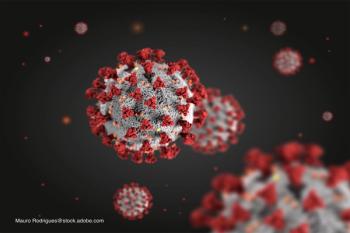
Adolescence is often a time when a teenager swings between maturity and childish behavior. This already fraught period has been exacerbated by the effects of the pandemic as well.

Adolescence is often a time when a teenager swings between maturity and childish behavior. This already fraught period has been exacerbated by the effects of the pandemic as well.

Addressing the need to be proactive in promoting safety during the summer months.

As the COVID-19 vaccine expands to include more of the pediatric population and restrictions continue to loosen, what's going to happen now?

Knowing the symptoms of athlete triad symptoms can aid with diagnosis before the effects become irreversible.

A look at 5 highlights from the virtual 2021 annual National Association of Pediatric Nurse Practitioners (NAPNAP) meeting.

As the world has changed because of coronavirus disease 2019, the digital world has kept pace with ever-changing best practices and guideline updates.

As the 2020-2021 influenza season loomed, many in health care worried that the seasonal disease would add to the extraordinary burden of coronavirus disease 2019 and create a perfect storm. Have various prevention strategies helped prevent this potential issue?

With the good news of the 2 successful vaccines and a much greater understanding of COVID-19, it is time to consider what lies ahead for 2021.

Let’s continue to be vigilant in our practices to prevent medical errors, thus attaining what we all strive for: helping our pediatric/adolescent patients return to their normal thriving state of health and well-being.

Encourage parents to model healthful eating behaviors and positive relationships with good eating habits.

COVID-19 has created many stresses: mental, job-related, and health. For some caregivers, these stressors are complicated further with caring for a child with attention-deficit/hyperactive disorder (ADHD).

Growing evidence indicates that COVID-19 impacts more than the respiratory system. Clinicians should keep an eye out for dermatologic conditions that may be associated with the illness.

This is the critical moment in time for all health care providers to proactively stop this potential public health nightmare by speaking with all parents and adolescents about the absolute need for everyone to receive the influenza vaccine.

Our practice resources and frequently asked questions page seeks to answer any inquiry you may have related to professional practice.

PedsCE-SM is the continuing education you need, when you need it.

Use NAPNAP’s Advocacy Center to stay up to date on our priority child health and practice legislation.

As a professional organization in its fifth decade, NAPNAP is rich in experience and history when it comes to advanced practice nursing and children’s healthcare.

With more than 8,000 members nationwide, NAPNAP is the professional association for pediatric nurse practitioners and other pediatric APRNs, including FNPs who treat children.

Every pediatric provider including pediatric nurse practitioners and pediatric nurses working in hospital or in outpatient settings must know the various ways children and adolescents may present with possible COVID-19 symptoms. They must also know which patients are at high risk of developing multisystem inflammatory syndrome in children (MIS-C).

COVID-19 has wrought many changes, including how medical practices provide care and keep patients safe.

It was initially thought that children were primarily unaffected by COVID-19 and were asymptomatic carriers if they did have the disease. The rise of multisystem inflammatory syndrome in children (MIS-C) has radically changed this thinking.

The COVID-19 pandemic continues to rage, but many questions remain. Questions like: How are children coping with the trauma many families are currently experiencing in their family lives? Are schools and pediatric offices prepared to help children and adolescents cope with their losses?

The world in which we live, work, socialize, learn, and play has turned upside down and is spinning out of control, directly related to COVID-19. Numerous questions have emerged and more emerge every day: How do we make sense of our world that changes direction within a millisecond of time?

Cystic fibrosis (CF) is an emotionally and medically complex disorder. Advancements on the care management for children with CF are very promising. Pediatric nurse practitioners are a critical part of that team.

I believe that professional practitioners survey results/research, and especially comparative survey results, offer professionals and professional organizations opportunities to make impactful change, and, in this case, changes that can improve health care delivery for infants, children, adolescents, and their families.

As advocates for child health, PNPs should actively support the Healthy Babies Bright Futures recommendations to create public health policies that ensure food safety and the removal of toxic heavy metals from infant and toddler food supplies. In fact, our advocacy should go beyond the infant food supply to all foods, to protect the health and well-being of all individuals regardless of age. Toxic metals should not be a part of anyone’s daily dietary intake.

Pediatric educational and policy conferences are always special, providing opportunities to update knowledge and practice skills; introduce new practice guidelines with rationales for evidence-based changes; present the most recent research findings that have the potential to improve practice and healthcare outcomes; and unequalled opportunities for networking.

The evidence is clear: Practitioners who fail to administer immunizations according to the Centers for Disease Control and Prevention and Advisory Committee on Immunization Practices schedules results in adverse outcomes for children and adolescents who are needlessly exposed to vaccine preventable diseases.

I totally agree with Dr. Schuman’s perspective in his article that “it is inappropriate and irresponsible for pediatricians [and I include, PNPs] to encourage the use of cannabidiol (CBD) until more studies are available” to assure the safety and efficacy of CBD are clearly established in rigorous randomized controlled clinical trials (RCTs).

'Building a medical home for children with autism' describes the importance of establishing a medical home in a pediatric office for children with a diagnosis of autistic spectrum disorder (ASD) and discusses five major management strategies for the successful management of children in the medical home.